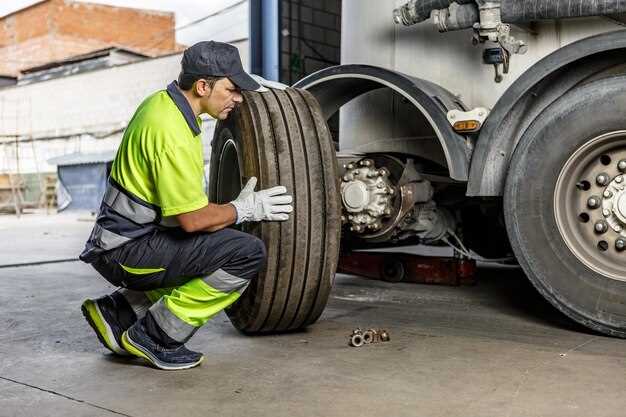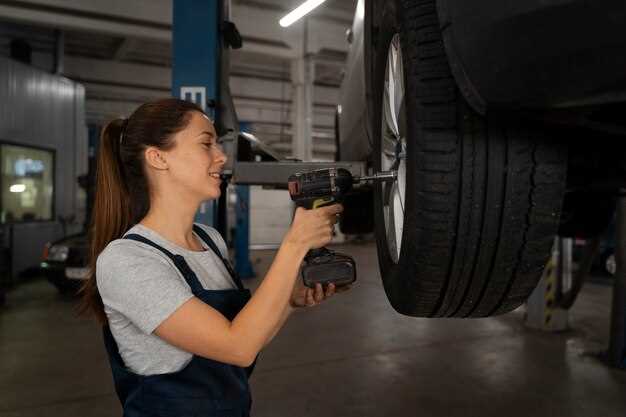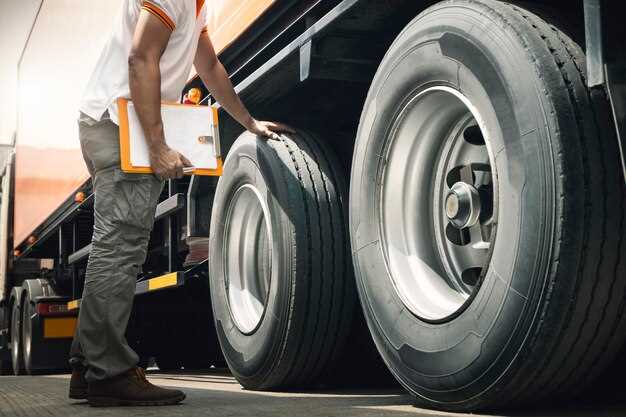
Tires play a crucial role in the performance and safety of work trucks, which are often subjected to demanding conditions. Proper tire maintenance, particularly balancing, is essential for maintaining vehicle stability and ensuring efficient operation. Unbalanced tires can lead to increased vibration, which not only affects the driving experience but can also cause premature wear on other components of the truck.
When tires are not properly balanced, it creates an uneven distribution of weight, resulting in vibrations that can be felt through the steering wheel and the entire vehicle. These vibrations can cause discomfort for the driver and can also reduce the effectiveness of the truck on rugged terrains. In addition, excessive vibration can lead to accelerated wear on tires, suspension systems, and other vital parts, ultimately leading to higher maintenance costs and reduced reliability of the vehicle.
For work trucks, where reliability and performance are paramount, proper tire balancing is not just a maintenance task; it is an investment in the vehicle’s longevity and efficiency. By understanding the importance of tire balancing and addressing any issues promptly, fleet managers and drivers can enhance safety, improve fuel economy, and ensure optimal performance in their operations.
Identifying Symptoms of Unbalanced Tires in Work Trucks
Unbalanced tires can have a significant impact on the performance and safety of work trucks. Recognizing the symptoms early can save time and money on repairs. One of the most common indicators of unbalanced tires is excessive vibration, particularly noticeable in the steering wheel and throughout the cabin. This vibration usually becomes pronounced at certain speeds, especially during acceleration or highway driving.
Another symptom is uneven tire wear, where some areas of the tire tread wear down faster than others. This can lead to reduced traction and increased risk of blowouts. Inspecting the tires regularly for such wear patterns can provide valuable insight into whether balancing is needed.
Furthermore, if the truck seems to drift to one side while driving, this may also indicate a balance issue. An unbalanced tire can cause the vehicle to pull toward the heavier side, making it difficult to maintain a straight trajectory.
Lastly, listen for unusual noises coming from the tires. A thumping or humming sound often accompanies unbalanced tires, resulting from the irregular contact between the tire and the road surface. Addressing these symptoms promptly through proper balancing can enhance the truck’s performance and prolong tire life.
Step-by-Step Guide to Balancing Tires on Heavy-Duty Vehicles

The process of balancing tires on heavy-duty vehicles is essential for ensuring optimal performance and longevity of the tires. Follow these steps to achieve proper balancing.
1. Gather Necessary Tools and Equipment: Before starting, ensure you have a high-quality tire balancer, lug wrench, and tire pressure gauge. Safety gear is also recommended.
2. Prepare the Vehicle: Park the heavy-duty vehicle on a flat, solid surface. Engage the parking brake to prevent any movement during the balancing process.
3. Remove the Tire: Use the lug wrench to loosen and remove the lug nuts from the wheel. Carefully take off the tire and place it on the tire balancer.
4. Set Up the Tire Balancer: Follow the manufacturer’s instructions to mount the tire on the balancer. Input the correct tire specifications, including width and diameter, for accurate results.
5. Perform the Balancing: Activate the balancer, allowing it to spin the tire. The machine will detect any imbalances and indicate where weight needs to be added or removed.
6. Add Weights as Required: Based on the balancer’s readings, attach the appropriate weights to the tire in the designated areas. Make sure these weights are securely fastened to ensure they do not detach during operation.
7. Recheck the Balance: Spin the tire again on the balancer to confirm that the adjustments have corrected the imbalance. If necessary, make further adjustments by adding or removing weights.
8. Reinstall the Tire: Once balanced, carefully remove the tire from the balancer. Place it back on the vehicle and hand-tighten the lug nuts. Follow up by using the lug wrench to securely fasten the nuts in a star pattern.
9. Final Check: Lower the vehicle, then use a tire pressure gauge to ensure that the tire pressure is at the manufacturer’s recommended level. Proper inflation is critical for maintaining balance and overall performance.
10. Test Drive: After balancing and reinstalling the tire, take the vehicle for a test drive. Monitor for any vibrations or unusual noises, as these may indicate the need for further adjustments.
Impact of Proper Tire Balancing on Vibration and Handling

Achieving optimal performance in work trucks involves meticulous attention to tire maintenance, particularly balancing. Proper tire balancing is essential for minimizing vibrations that can lead to discomfort and decreased control during operation.
When tires are not balanced correctly, uneven weight distribution results in vibrations that can be felt through the steering wheel, seat, and floor of the vehicle. These vibrations not only lead to a less enjoyable driving experience but can also cause long-term damage to the vehicle’s suspension system. Over time, this could lead to costly repairs and reduced lifespan of various components.
Balanced tires contribute to improved handling characteristics. When all four tires share an even weight distribution, the truck responds more predictably to steering inputs. This predictability is crucial for work trucks, often subjected to varying road conditions and heavy loads. Enhanced handling allows drivers to maintain better control, especially during turns and when navigating uneven surfaces.
Furthermore, regular tire balancing can extend the lifespan of the tires themselves. Unequal wear patterns caused by poor balancing can lead to premature tire failure, resulting in frequent replacements and increasing operational costs. By ensuring proper balancing, businesses can achieve higher efficiency, greater safety, and reduced downtime.
In summary, the impact of proper tire balancing on vibration and handling cannot be overstated. It is a critical practice that influences not only the comfort and safety of the driver but also the overall longevity of the work truck.




